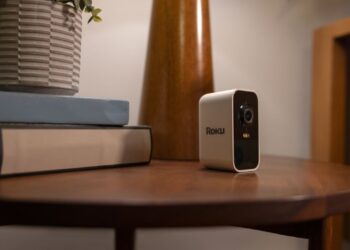In the realm of affordable smart TVs, TCL and Hisense have emerged as popular contenders, particularly in the realm of Roku TVs. Both brands offer a wide range of features, performance levels, and price points, making it challenging for consumers to choose between them. This article delves into the strengths and weaknesses of each brand to help you make an informed decision.
Overview of TCL and Hisense
TCL: A Brief Introduction
- Established Brand: Founded in 1981, TCL has rapidly expanded its market presence, making it one of the largest TV manufacturers globally.
- Focus on Innovation: Known for their innovative technology, including QLED and Mini-LED displays.
- Roku Partnership: Most TCL TVs come with the Roku operating system pre-installed, enhancing user experience with easy access to streaming services.
Hisense: A Closer Look
- Global Expansion: Founded in 1969, Hisense has solidified its position as a significant player in the electronics market, particularly in North America.
- Variety of Products: Hisense offers a diverse range of TVs, including budget-friendly options to premium ULED models.
- Roku Integration: Like TCL, Hisense also offers Roku TVs that provide intuitive access to various streaming platforms.
Key Features Comparison
Picture Quality
-
TCL:
- QLED Technology: Offers vibrant colors and improved brightness.
- 4K Resolution: Most models come with 4K capabilities, enhancing picture clarity.
- HDR Support: TCL TVs support multiple HDR formats, improving contrast and color accuracy.
- Hisense:
- ULED Technology: Delivers enhanced brightness and contrast, competing well with QLED.
- Wide Color Gamut: Many models support a broader color spectrum, providing a richer viewing experience.
- HDR Performance: Hisense TVs also support HDR10 and Dolby Vision, catering to high-dynamic-range content.
Sound Quality
-
TCL:
- Decent Built-in Speakers: While sound is generally satisfactory for casual viewing, it may lack the depth desired by audiophiles.
- Audio Enhancements: Some models feature Dolby Audio, providing a clearer sound experience.
- Hisense:
- Improved Audio Systems: Many Hisense models come equipped with better audio technology, offering a fuller sound.
- Sound Modes: Certain models feature customizable sound modes optimized for different content types.
User Interface and Smart Features
Roku Operating System
- Ease of Use: Both TCL and Hisense models feature the Roku operating system, which is known for its straightforward interface.
- Streaming Options: Access to thousands of channels and apps, including popular services like Netflix, Hulu, and Disney+.
Remote Control
-
TCL Remote:
- User-friendly design with dedicated buttons for popular streaming apps.
- Voice control features available on select models.
ADVERTISEMENT - Hisense Remote:
- Similar design with access to streaming services.
- Some models offer a backlit remote for ease of use in the dark.
Price and Value
TCL Pricing
- Budget-Friendly Options: TCL offers a range of models at competitive prices, making it accessible for various budgets.
- Value for Money: The cost-to-feature ratio is impressive, especially for their 4K models with advanced technologies.
Hisense Pricing
- Competitive Pricing: Similar to TCL, Hisense provides affordable options with good features, especially in the mid-range category.
- Quality vs. Cost: Hisense tends to offer superior motion handling and gaming features in some models, providing great value for gamers.
Final Considerations
When comparing TCL and Hisense Roku TVs, it becomes clear that both brands have their unique strengths. Your ultimate choice may depend on personal preferences such as picture quality, sound, or budget. Here are some factors to keep in mind:
- For Gamers: Hisense models often offer better gaming features, including low input lag and faster refresh rates.
- For Movie Lovers: TCL’s QLED technology provides vibrant colors that may be particularly appealing.
- Budget Considerations: Both brands have options at varying prices, so consider your budget and required features.
In making a decision, it’s essential to weigh the features that matter most to you and consider how each brand aligns with your specific entertainment needs.






